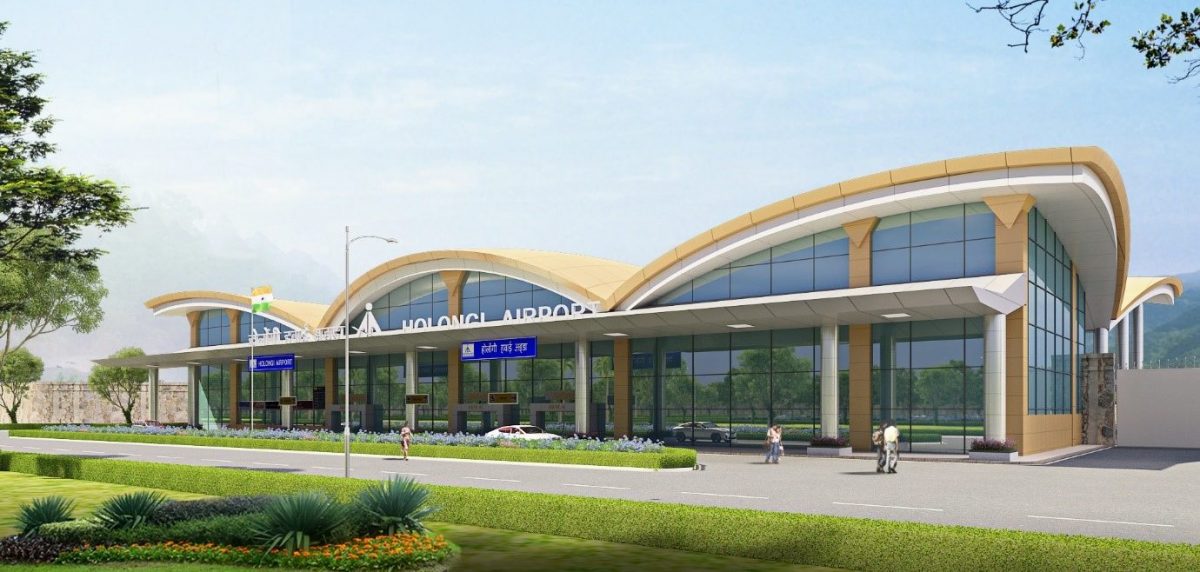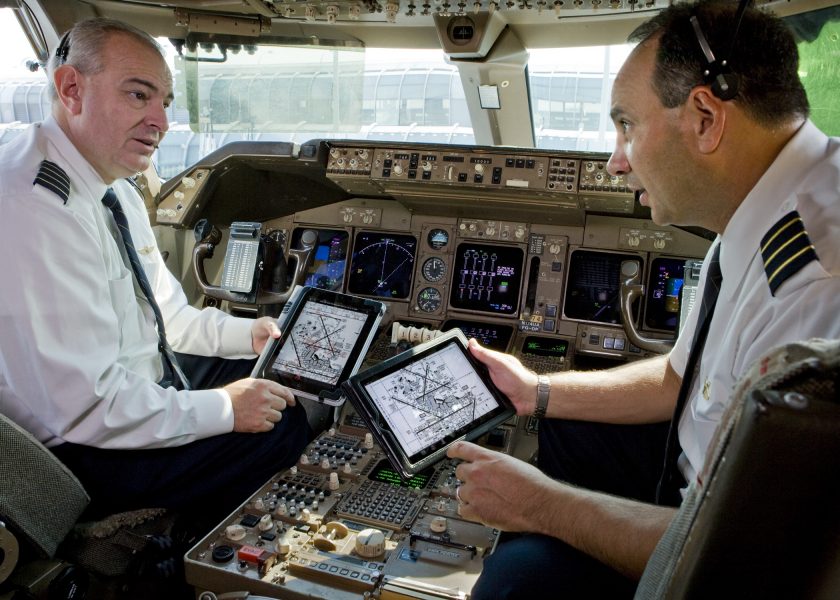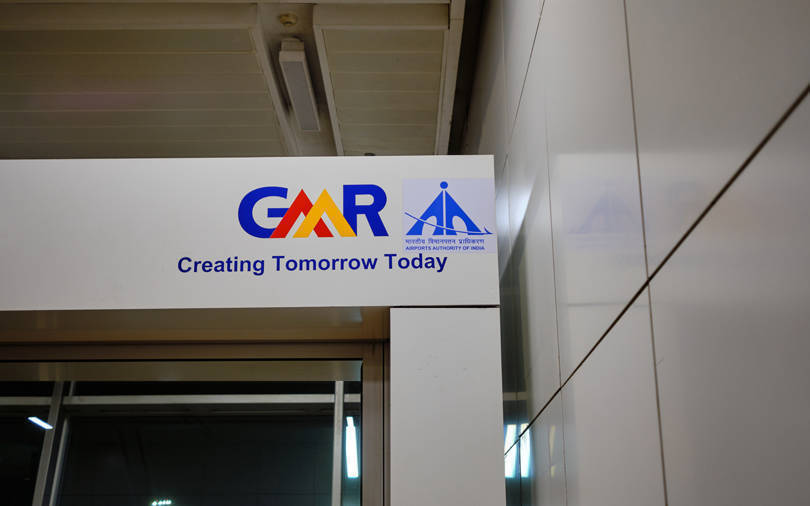Hollongi, a greenfield airport in Arunachal Pradesh expected to open in August 2022
Radhika Bansal
29 Dec 2021

Arunachal Pradesh chief minister Pema Khandu said that the state’s first airport Hollongi is expected to be ready by August 2022 ahead of the scheduled completion date.
Khandu visited the construction site of the ambitious Greenfield Airport at Hollongi along the boundary with Assam and took stock of the work progress on the ground. It may be noted that the airport is supposed to be completed by November 22, 2022, as per the original agreement with construction agencies.
However, the central and state government authorities are pushing for its commissioning by August 2022. Once commissioned, the airport will be the first in the mountain state with a runway of 2300 meters eligible for landing and take-off of Boeing 747 aircraft.
Khandu expressed satisfaction over the progress on the ground despite the hurdles posed by the COVID pandemic during the last two years. He informed that of the 2300 meter runway, work on 1500 meters has been completed.
He further informed that keeping in view the possibilities of future expansion, the government has acquired about 500 Sqm of land beyond the runway while the Kokila River that runs along the airport boundary is being diverted.
“This is a dream project of the entire population of Arunachal Pradesh. We need to thank the central government for extending all-out support in fulfilling the dream that too on time. We also need to appreciate all the agencies involved in the construction of the airport who are working day and night to meet the deadline despite hurdles. The pre-fabricated terminal building will be in place by early 2022.The pre-fabricated terminal building will be temporary while construction of the permanent building will continue. Once the permanent structure is ready, the temporary structures will be utilized as cargo area.There are no external hurdles and work is going on smoothly. There are few internal issues that the agencies are sincerely working on."Pema Kandu, Chief Minister, Arunachal Pradesh
Later, the Chief Minister held an internal review meeting with all project stakeholders wherein he was informed that the Passenger Terminal Building of approx. 4100 Sqm will be designed such as to handle 100 arriving and 100 departing passengers at a time with scope for future expansion.
While the acquisition of required land (5 acres) on Assam side, shifting of 132 KV Power Gridline and diversion of Kokila river are under process about 74% work has been done on the 4-lane approach road of about 4 km to the airport, which will be completed by January 31 next year.
Pema Kandu, Chief Minister, Arunachal Pradesh
Project executioners informed that ongoing works were affected due to COVID 19, particularly the second phase of lockdowns imposed by the governments, unavailability of construction materials and parts of machinery in nearby areas and its restricted movement.
Work agencies couldn’t maintain sufficient manpower at the project site due to fear of COVID 19 break out, they said. Also shifting of Chakma habitats and High Tension Power lines along the proposed runway alignment got delayed due to the pandemic.
Read next
Tata-owned Talace offered a loan of INR 35,000 crore from Air India lenders
Radhika Bansal
29 Dec 2021
Air India lenders have reportedly offered to loan INR 35,000 crore to Tata Group's Talace, which - on December 20 - received Competition Commission of India (CCI) nod to acquire the national carrier.
Lenders will loan the amount at a weighted-average yield of 4.25%, the rate at which the sovereign borrows for a year, The Economic Times reported, citing sources.
As per the report, Talace had earlier invited bids for a one-year general purpose loan of INR 23,000 crore from Air India's existing lenders.
"It is an overwhelming response considering that the loan is unrated and unsecured and yet the pricing is near sovereign," an executive at one of the lenders told the publication.
Large commercial banks such as State Bank of India, Bank of Baroda, Punjab National Bank and Union Bank of India have approved credit limits in the range of INR 12,000 crore to INR 3,000 crore. The Tatas will inform each lender about the allocation in the first week of January and draw sanctioned limits between January 10 and 15. Banks that have sanctioned loans to the Tatas have passed a special resolution to lend to Talace below the marginal cost of fund-based lending rate (MCLR), which is currently pegged at over 7% for most banks.
Tata is likely to inform all lenders about the allocation in the first week of January and draw sanctioned limits between January 10 and 15. The new debt will replace the earlier credit raised by Air India at 9-10%, the report said.
In October, the government accepted the highest bid made by a Tata Sons company of INR 18,000 crore for 100% equity shares of Air India and Air India Express along with its 50% stake in ground-handling company AISATS.
Tata would pay INR 2,700 crore cash and take over INR 15,300 crore of the airline’s debt.
The total debt of Air India as of August 31 stood at INR 61,560 crore. Debt which will be taken over by Tatas will be INR 15,300 crore while INR 46,262 crore will remain with Air India Asset Holdings Ltd, which is a special purpose vehicle created to retain the non-core assets, land and the debt of Air India which Tata will not be taking on.
(With Inputs from The Economic Times)
Read next
If you're a frequent flyer and travelled during the cold, wintry months, chances are, you've glanced out of the windows and seen vehicles circling the plane, spraying fluid on the wings and often wondered what those are. They are the aircraft and engine ice protection systems and are generally of two designs: either they remove ice after it has formed, or they prevent it from forming in the first place.
The Points Guy
Preventing a build-up of snow and ice on the wings and tail of an airplane is crucial for aerodynamic reasons. A plane's wings and rear tail component are designed with a very specific shape to provide proper lift for flight. The accumulation of snow and such particles on these surfaces essentially distorts the aerodynamic shape thereby disrupting the flow of air around and over them. This leads to a reduction in lift and has the potential to cause serious accidents (as has been in the past) if not dealt with correctly.
De-Icing
Generally, a mixture of a chemical called glycol and water, also known as the De-icing fluid is heated and sprayed under pressure to remove ice and snow or even frost, that has accumulated on the aircraft.
Pneumatic De-Ice Boots
Aircraft wing and stabilizer de-ice boots
Another very commonly used technique utilizes pneumatically inflated rubber boots on the leading edges of airfoil surfaces. This typically includes the wings and horizontal stabilizer, but may also include struts, cargo pods, or even antennae. Relatively low-pressure air is used to rapidly inflate and deflate the boot in a sequence of segments-for instance the outer wings followed by the inner wings followed by the horizontal stabilizer.
Proper maintenance and care of deicing boots are important for the continued operation of this system. They need to be carefully inspected during preflight.
The deicing fluid has a limited ability to prevent further ice from forming and hence in such cases, further action needs to be taken to prevent ice from forming again on the aircraft before takeoff.
Anti-Icing
World Fuel Services
The fluid in this case is of a higher concentration of glycol than deicing fluid. It has a freezing point well below 32 degrees Fahrenheit or zero Celsius and therefore can prevent the precipitation that falls into it from freezing on the plane's surface. Additionally, it also contains additives that thicken it more than deicing fluid to help it adhere to aircraft surfaces as it speeds down the runway during takeoff.
Thermal anti-ice system
Heat provides one of the most effective methods for preventing ice accumulation on an airfoil. High-performance turbine aircraft often direct hot air from the compressor section of the engine to the leading edge surfaces. The hot air heats the leading edge surfaces sufficiently to prevent the formation of ice. Thermal anti-ice systems are activated before entering icing conditions.
Types of aircraft deicing/anti-icing fluids
They generally consist of 4 types:
Type I fluids are used for deicing or anti-icing, but provide very limited anti-icing protection.Type II fluids are designed to remain on the wings of an aircraft during ground operations, thereby providing anti-icing protection. This fluid should be used on aircraft with rotation speeds (Vr) above 100 knots, unless otherwise specified by the aircraft manufacturerType III fluids are designed for aircraft that have a shorter time to rotation and this should make it acceptable for some aircraft that have a Vr of less than 100 knots unless otherwise specified by the aircraft manufacturer. Type IV anti-icing fluids meet the same fluid specifications as the Type II fluids.
The operator is ultimately responsible for ensuring that only qualified fluids are used.
The weeping-wing design
TKS weeping wing anti-ice/deicing system | Boldmethod
Not as common as thermal anti-ice and deicing boots, this design uses small holes located in the leading edge of the wing to prevent the formation and build-up of ice. An antifreeze solution is pumped to the leading edge and weeps out through the holes.
Pitot and static ports, fuel vents, stall-warning sensors, and other optional equipment may be heated by electrical elements. Operational checks of the electrically heated systems are to be checked by the AFM /POH.
Pilots temporarily disable the aircraft's ventilation system during the deicing/anti-icing process to prevent fluid fumes from entering the cabin although the fumes are considered nontoxic for inhalation.
Most light aircraft have only a heated pitot tube and are not certified for flight in icing. Hence they are required to exit icy conditions immediately upon entering.
SOURCE(s)
COVER: FlightRadar24
Read next
SpiceTech creates a digital library of documents for pilots to use in cockpit
Radhika Bansal
29 Dec 2021

Coming up with yet another in-house innovation, SpiceTech, the technology subsidiary of SpiceJet, has developed a digital, smart document library called Pilot Docs for storing all manuals used by pilots in the cockpit. Pilot Docs has been approved by the Directorate General of Civil Aviation (DGCA) for use on SpiceJet’s Boeing 737 fleet.
Pilot Docs is already being used on the B737 fleet on a trial basis along with a similar product from a foreign provider. With DGCA approval, the airline will fully transition to Pilot Docs resulting in substantial savings for SpiceJet.
SpiceJet will be the first Indian airline to have an indigenously-built digital library in use in its fleet helping it move a step closer to its goal of paperless operations. Pilot Docs eliminates the need to carry a large number of paper manuals on the aircraft contributing to the airline’s overall sustainability initiative, enhancing safety through easy and immediate access to relevant information in any situation, eliminating compliance errors and augmenting operational efficiency. Furthermore, it is a remarkable achievement for the airline to save cost on a service that was earlier outsourced at a hefty annual fee.
Pilot Docs is feature-rich. It can auto-sync all manuals available on the pilot iPad. Any future manual updates or addendums are automatically downloaded and made available to the pilots immediately. It allows fast keyword search across all content thus enabling pilots to find relevant content quickly in all situations. Besides, it also allows pilots to add highlights and annotations to the content. Pilot Docs tail specific filtering allows quick access to relevant manuals. Pilots can easily send feedback directly to the manual owner.
SpiceTech has also indigenously developed an electronic flight folder that provides pilots with all the documents required for the flight briefing in an easily accessible form on their tablets. This includes the briefing sheet, computerized flight plan, weather forecast, weather, wind charts, notices related to operations including notes regarding any technical defects and several other documents. Together, with Pilot Docs, this replaces the 8-14 Kg flight bag which the pilots used to carry earlier before the digitalization.
Recently, SpiceTech also developed an international award-winning cabin crew app, called SG Docs which won the ‘APEX Newcomer of the year award’ in December 2021. The mobile app for Cabin Crew digitally hosts all cabin documents and manuals, cabin announcements, current cabin defects and various digitized operational forms. It is designed to function seamlessly in offline mode.
“Pilot Docs is yet another revolutionary step from SpiceJet’s technology arm, SpiceTech, to eliminate the airline’s dependency on foreign providers for services like digital document library. SpiceTech’s Pilot Docs makes the airline entirely self-reliant, promotes paperless flight operations and leads to cost savings to a significant extent. SpiceTech’s vision is to be the recognized world leader in aviation technology with innovative product offerings that it can make available to SpiceJet and other airlines around the world. SpiceTech is continuously innovating to enhance customer delight and improve operational efficiency with exclusive product offerings.”Ashish Vikram, Chief Technology & Innovation Officer, SpiceJet
With the help of these products, SpiceJet has eliminated the use of large amounts of paper inside its aircraft while enhancing operational efficiency, increasing compliance and improving safety.
Some of the other Made in India innovations of SpiceTech include SpiceScreen, a first-of-its-kind, light-in-weight, wireless entertainment system that enables seamless delivery of content onto the personal devices of the passengers through a Wi-Fi network. SpiceJet’s 24×7 automated customer service agent, Ms Pepper’s WhatsApp based check-in is another such offering through which SpiceJet enhances customer experience and convenience.
Read next
Lufthansa plans to cut 33,000 flights from its winter schedule due to the spread of the Omicron coronavirus variant and related travel restrictions, CEO Carsten Spohr told the Frankfurter Allgemeine Sonntagszeitung newspaper.
"From mid-January to February, we see a sharp downturn in bookings," he told the newspaper on Thursday, December 23 adding that 33,000 flights were equivalent to about 10% of the flight plan.
In particular, Lufthansa was feeling the absence of passengers from Germany, Austria, Switzerland and Belgium, which are being hit particularly hard by the pandemic, said Spohr.
He said that the German airline would have cut even more flights in January due to weak demand if it didn't have to comply with European Union regulations on slot usage.
Airlines are already starting to see traffic fall as Europe imposes new travel restrictions. In the last few days, travellers from the UK, Demark, Norway, and the Netherlands have been subjected to stricter testing or quarantines.
"We have to operate 18,000 additional, unnecessary flights in the winter just to secure our take-off and landing rights.While climate-friendly exemptions have been found in almost every other part of the world during the pandemic, the EU does not allow it in the same way.This harms the climate and is exactly the opposite of what the EU Commission wants to achieve with its 'Fit for 55' plan."Carsten Spohr, CEO, Lufthansa
In July, the EU set a new requirement that airlines must reach 50% slot utilization to prevent them from losing their spaces at airports. While these rules had been waived between 2020 and summer 2021, they came back into effect this winter. Now, fears about ghost flights may just be coming true.
In addition to being economically unfeasible, running extra flights is a huge environmental burden. With the industry trying to cut its emissions significantly in the next decade, the EU slot rule may be forcing carriers to do the exact opposite.
Read next
GMR Infrastructure on Thursday, December 23 said it has received approval from the National Company Law Tribunal for the restructuring plan involving the demerger of the non-airport business.
GMR Infrastructure had unveiled the rejig plan on August 27, 2020, to simplify the corporate holding structure and to attract sector-specific global investors.
"The Hon'ble National Company Law Tribunal, Mumbai Bench, has sanctioned the composite scheme of arrangement amongst GMR Power Infra Limited (GPIL), GMR Infrastructure Limited (GIL) and GMR Power and Urban Infra Limited (GPUIL) and their respective shareholders under Sections 230 to 232 of the Companies Act, 2013.Separate listing of both the airport and non-airport businesses will also help in simplifying the corporate holding structure. The vertical split demerger will go a long way in facilitating a deeper understanding of the airport business independently as compared to other business verticals within the group."GMR Infrastructure
The sanction was pronounced by the tribunal on December 22, 2021.
On August 27, 2020, the board of GMR Infrastructure together with other group companies -- GPIL and GPUIL -- had decided on a composite scheme of the arrangement including the demerger of the non-airport business of GMR Infrastructure.
Currently, the GMR Group operates the Indira Gandhi International Airport in New Delhi and Hyderabad's Rajiv Gandhi International Airport. It also operates the Cebu airport in the Philippines.
Its energy business has a diversified portfolio of around 4,995 MW generation capacity.
GMR had filed a composite scheme of amalgamation and demerger among GMR Power Infra and GMR Power and Urban Infra with the NCLT in March this year.



Comment